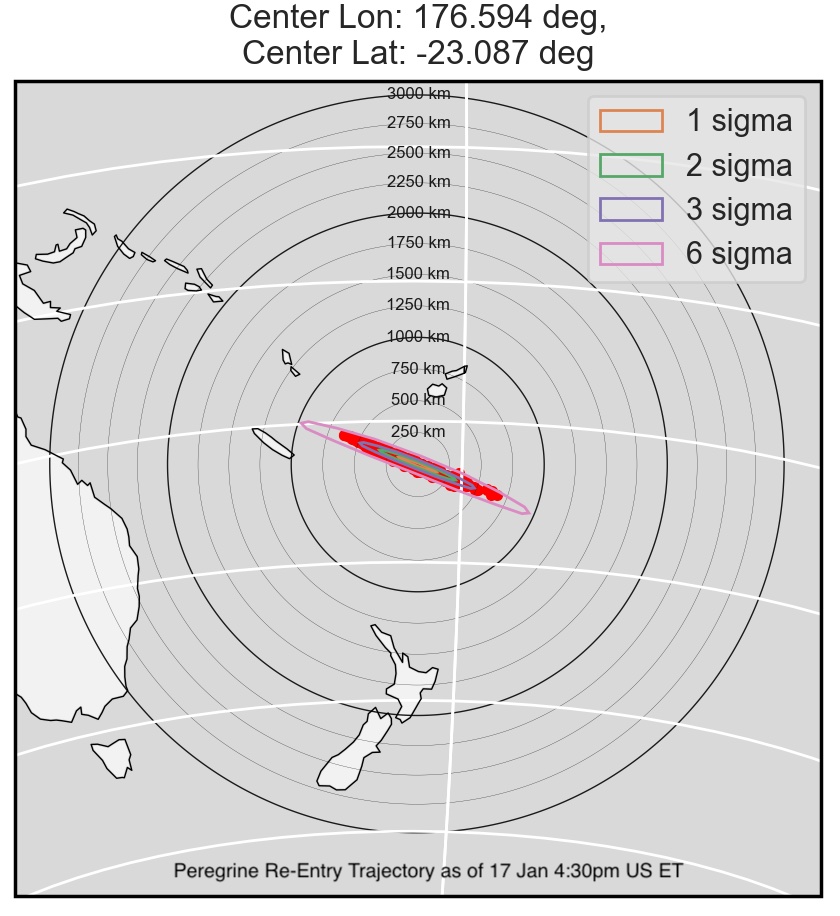
Astrobotic has positioned the Peregrine spacecraft for a safe, controlled re-entry to Earth over a remote area of the South Pacific. The team has been continuously monitoring our re-entry analysis with NASA, which indicates a re-entry path over the indicated area below, with no anticipated hazards. A safe re-entry is our top priority, so the team developed a two-step maneuver to move the spacecraft and change its projected trajectory.
The first step required a main engine burn. Due to the propulsion anomaly, it was impossible to operate the main engines normally. As such, we developed a plan to fire the main engines with a series of very short burns. We conducted a test burn of all five main engines. Each pulse was spaced out to avoid overheating, allowing our mission control team to monitor results and the spacecraft’s status after every burn. Following this, we performed a series of 23 small main engine burns.
Secondly, we adjusted the spacecraft’s attitude so the force induced by the leaking propellant shifted us towards the South Pacific Ocean. The result of these two maneuvers is the ellipse in the graphic shown.
The procedures the team executed were to minimize the risk of debris reaching land. Astrobotic continues to work closely with NASA and other relevant government authorities to keep everyone informed and to solicit feedback as appropriate.
Peregrine has been operating in space for 9 days and 16 hours. It is 139,000 miles (223,700 km) from Earth. We expect re-entry to occur at approximately 4pm Thursday, January 18 (US Eastern time).
As re-entry is now targeted for Thursday, we are moving our previously scheduled media telecon to Friday, January 19 at 1pm (US Eastern time) to provide a comprehensive mission update.

